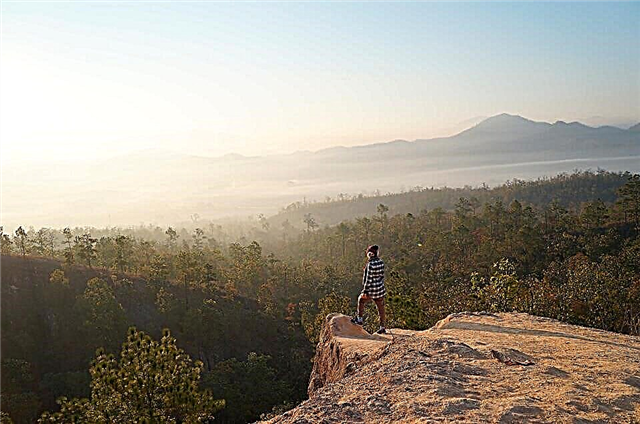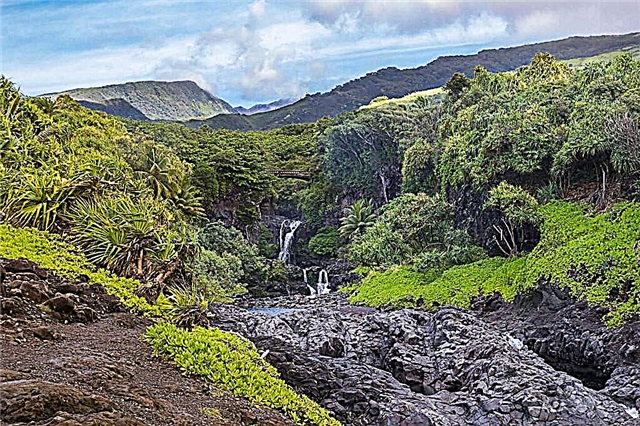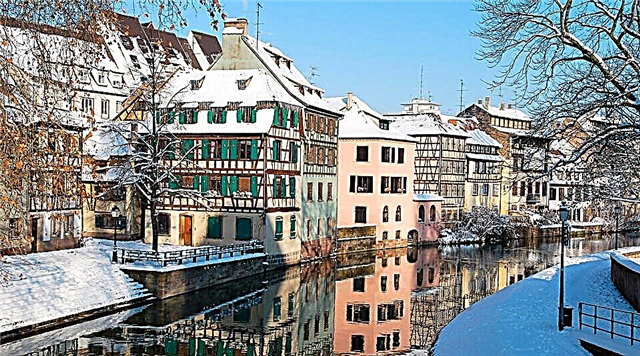To fully understand the work of Salvador Dali, one must visit his homeland in the small Spanish town of Cadaques, located on Cape Creus. Only by seeing the local landscapes can you imagine where the artist got his inspiration from. Truly unearthly outlines of rocky mountains, like sliced heads of giant cheese, amaze and fascinate. But let's not get ahead of ourselves and tell you in order what this amazing place is.
Where are interesting places

Cape Creus is the easternmost point of Spain and the entire Iberian Peninsula. The closest major city is Figueres, 39 kilometers away from which you can travel by car or bus.
On the way, you will have to overcome the pass and make the first stop in Cadaqués, where the famous Spaniard Dali spent most of his life, living in a house with his beloved wife and his muse Gala. Tickets to their house-museum must be booked in advance and picked up a maximum of half an hour before the tour. Its cost is 11 euros. But you can get to the famous olive garden without an appointment for only 5 euros. You should be aware that the museum is closed to visitors in January.
Natural landscapes

There are only six kilometers from Cadaques to Cape Creus, which can be traveled in the summer by a special road train. In other seasons, you can use the services of local taxis, but to get more pleasure, it is worth covering this path on foot. We warn you right away that you will have to go on mountain roads, so you need to take care of the appropriate footwear. But it is worth making a reservation that the ascents here are not steep and suitable for walking, that is, mountaineering skills are not needed.
Having breathed in a few breaths of salty sea air, you begin to feel a surge of some inexplicable happiness. No wonder the Spaniards say that this cape is a magical place and has hypnotic properties.
Another positive aspect of walking is its educational nature, since this area belongs to the reserve and is called the Cap de Creus National Park.

It is impossible to remain indifferent, contemplating the reliefs of the amazing mountains, which in some places look like melting cheese with huge holes. Since the rocks are of volcanic origin, you can find craters of bizarre shapes in them, which you would rather see in films about alien civilizations than about earthly life. Strong winds and sea surf have formed amazing caves and grottoes that beckon with their mystery and hidden secrets.
Flora and fauna of the Cape

It is worth noting the diverse flora, represented at times by unique species of grasses and shrubs. Their rich color scheme transforms the slopes into a multi-colored pattern. Here you can also find representatives of the fauna of this region, which include wild cats. If you are very lucky, you can see a proud deer. Falcon and eagle nests can be seen on the peaks, while these proud birds soar in the air. Along the paths that lead directly to the sea, you can go down to the shore and see clusters of corals in the water, schools of small fish and sea urchins.
Cape at the "end of the world"

And now the last hundred meters remain to the final point of Cape Creus. The trail here goes steeply uphill, so it is worth a little more effort, but the reward for this final dash will be simply stunning views. Around, as far as the eye can reach, there is only water, sky and rocks. There is a feeling that you are experiencing the moment of the birth of the universe, when there is still nothing alive, only all the elements intertwined together to create the miracle of life.
The impressions are also added by the wind, which blows here constantly and with great force. There is a legend that this wind can take away the mind, putting a person into a state of hypnosis. The entire walk takes an average of two to three hours, taking into account the shooting stops and descents to the sea.
Old lighthouse

There is a lighthouse on the cape. According to legend, it was built by the mythical Hercules, and looking at him, you involuntarily begin to believe in it. Scientists cannot accurately determine the date of the construction of this tower, but it is known for certain that it existed in the fifth century BC, and in 1853 it was restored, and in this form it can be seen even now. This lighthouse is a working one, as the rocky bays of the cape are fraught with many dangers for sea vessels.
Cap de Creus Restaurant

At the end of the trip, tourists will find a pleasant surprise in the form of the Cap de Creus restaurant, where you can have a tasty meal and relax off the road at a table made of boards and uncovered with a tablecloth, since sophistication and strict etiquette somehow do not combine with the landscape and atmosphere of this place. For a light snack, a cup of cappuccino, tortilla (omelet) and bread grated with fresh tomatoes are suitable. All this will cost about 15 euros.
For those who are hungry more, they will offer seafood dishes, several vegetable dishes, as well as something spicy from Indian cuisine. If you wish, you can rent a room located on the second floor of the restaurant and stay overnight. But in the morning everyone will be awaited by a spectacle of stunning beauty - dawn. Thousands of people come to see him on weekends. It is impossible to describe this natural phenomenon, so even for this it is worth visiting this “end of the world”.
[tp_hotel_widget hotel_id = 281927 responsive = true subid = ”myskreus”]
Return trip

Those who do not stay at the hotel go back by road along a perfectly smooth highway. It takes less time than walking, but it does not diminish the impressions.
In general, the journey takes about 6-7 hours, including a visit to the museum and the restaurant, but the impressions will last for a lifetime.
Recommended reading Alhambra Fortress in Spain.











